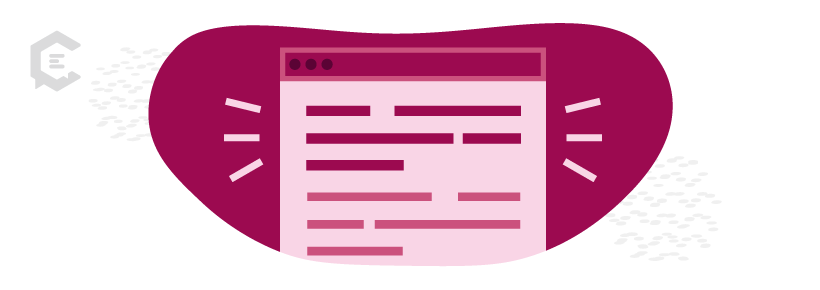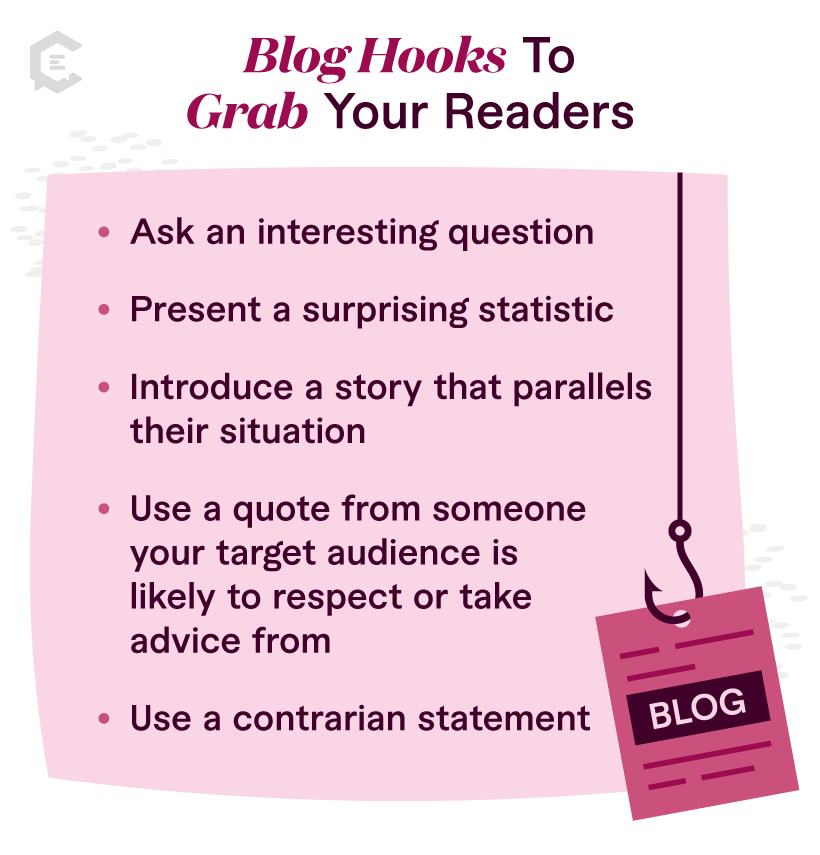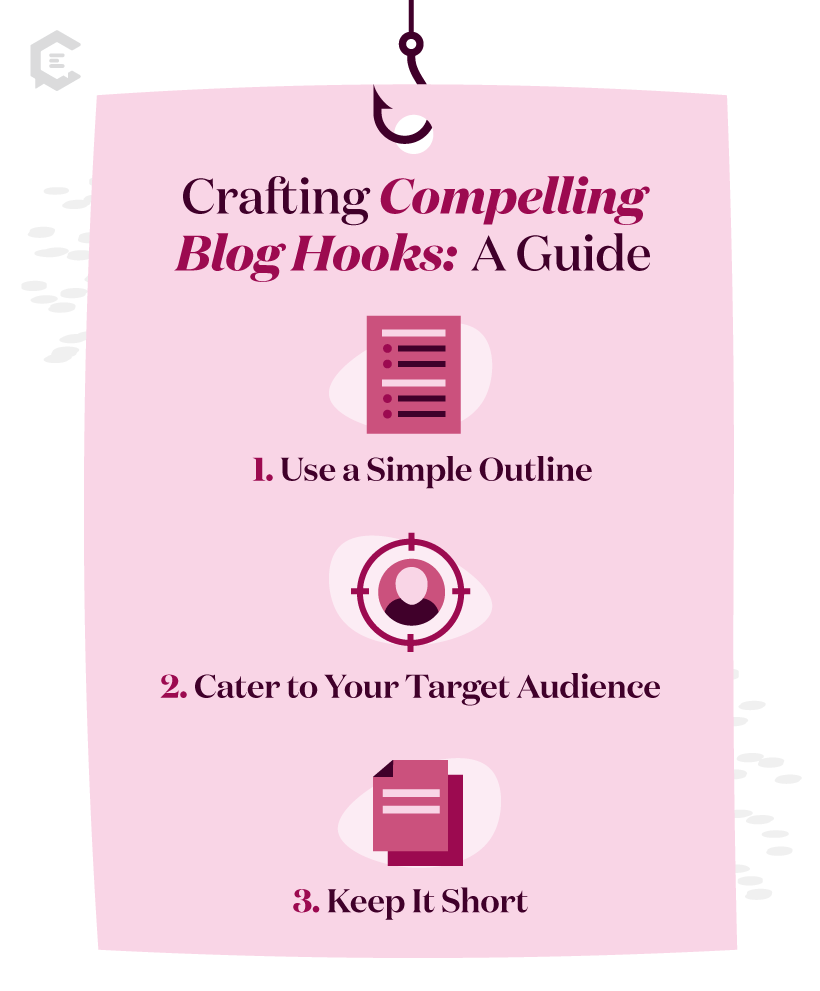From the moment the page loads, the clock starts ticking.
Research shows the average reader only spends 54 seconds on a webpage. If you want them even to get that far, you’ll need to write an introduction that hooks the reader. For example, this article’s lead drew you in by creating a sense of urgency and reinforcing the message with an eye-catching statistic. If you want to know more about the mistakes you might be making when writing your blog intros, you are now compelled to keep reading to find out.

Understanding the Importance of a Strong Blog Introduction
A strong blog introduction makes or breaks your first impression with your reader. It lets your audience know whether your blog will answer their questions and the kind of person you are. If you have a dull, run-of-the-mill, robotic intro, your audience may think your brand follows suit.
5 Common Mistakes When Writing Blog Introductions
Without any further ado, let’s get straight to it. Here are some mistakes you’ll want to avoid to ensure your blog reaches out, grabs, and holds your target audience.
1. Lacking a Clear Thesis Statement
You need a clear thesis in the introduction of your blog because readers need to know right away that it answers their questions. In other words, with a straightforward thesis, you say to your readers, “You’ve reached the right site. Welcome and enjoy.”
In some ways, a thesis statement is a lot like what you learned to write back in middle school: a brief statement that tells readers what your content is about. Newspaper reporters call it a nut graph because it explains the entire article in a nutshell. You’ll also want to incorporate a keyword in blog writing as you craft the statement.
Solution: For example, suppose you run a networking company and you’re writing a blog about the benefits of SD-WAN. After hooking the reader and acknowledging their problem, you may wrap up your introduction with a thesis statement like the following:
SD-WAN can optimize your network because it enhances throughput, saves money, improves security, and makes it easier to scale your operations.
With a thesis statement like this, the reader gets a high-level answer to their question and an understanding of what the rest of the blog offers. More importantly, you’re letting them know how your offering will help their business, which often translates to stronger leads.
2. Too Much Information
Too much info in your intro can lead to a fast outro, primarily because it can overwhelm your reader. It’s better to spread the main points of your blog throughout the H2s that follow. That way, the reader’s eyes can skip down the page and see, at a glance, what they’re going to learn.
Solution: Instead, your intro should provide a brief overview using one or two sentences. The thesis is often the best place to showcase your most important points. Once your audience has a concise preview of what’s to come, it’s best to move into the meat of the article so you can start delivering the deets.
3. Forgetting About Your Target Audience
Your target audience should dictate your tone, word choice, and thesis. Within two or three sentences, they should feel that your content was custom-designed for them. But it can be easy to focus your intro on what you’re passionate about instead of addressing your audience’s problem.
Solution: Make sure your intro resonates with your target audience by imagining when, where, and why they might be reading your content. For instance, imagine someone researching product options to present to a decision-maker. They may be checking out your blog while traveling, using a mobile device, and even prepping for a one-on-one meeting.
For that person, you’ll want your intro to serve as a quick pitch for your product or service. You’re essentially giving them what they need to say to start a convo with the decision-maker.
On the other hand, if your target reader is an executive, you’ll want to devote one or two sentences to describing their problem. In this way, you reassure them that you not only have a solution but that it addresses their specific need. From another angle, for executives, your intro should serve as a compassionate ambassador for your product or service.
4. Starting with Long, Dense Paragraphs
A wall of text feels like work for your readers. Even if you have paragraphs as long as 90 to 100 words for breaking down details later on, your readers may not be willing to comb through that much in your intro. This holds true even if the writing is excellent because, for your readers, more words equal more work,
Solution: You’ll want to keep your intro to one or two short paragraphs. To do this, focus on giving our readers the minimum. This could be just a hook, a connection to their pain point, and a thesis.
Once you have this, you can take a step back and ask if there’s anything else you need to include. If not, press on to the body.
5. Not Including a Hook
Online writing is a lot like fishing. Blog hooks get your reader to bite—or at least take a nibble—on your content. But some writers jump right into the meat of the discussion without taking a moment to grab their readers. They may just hit the back button to find something else to read if you don’t have their attention.
But how do you entice your reader to snack on your blog introductions?
Solution: The key is to get them to say, “Hmmm, that’s interesting, different, and applies to my situation.”
Here are some ways to grab readers with your blog hooks:
- Ask an interesting question
- Present a surprising statistic
- Introduce a story that parallels their situation
- Use a quote from someone your target audience is likely to respect or take advice from
- Use a contrarian statement, such as “Forget everything you learned in business school about…”
You can also combine the above techniques.
For instance, let’s say you offer online training programs for upskilling tech workers. The target audience for your blog is hiring managers looking to find and retain top talent. You could use a question/stat combo like this:
Money is the number one reason people leave their jobs, but which comes in second and third? According to the Pew Research Center, they are 2. feeling respected, and 3. a lack of advancement opportunities. The good news is you can solve all three challenges with a single solution.
Now, you’ve got your target reader to nibble on the bait. Your thesis makes them bite a little harder, and if each of your subheadings solves their problem, you might reel in a nice lead.
The Impact of These Mistakes on Reader Engagement and Retention
Understanding how these mistakes impact your readers begins with knowing how what readers do and why.
Understanding Reader Behavior
Blog readers are motivated by a need for more information, and that’s why they come to your site. Even though grammatical errors and poor writing can drive some away, as long as you provide them with the info they’ve been clicking, swiping, and scrolling for, you’re good.
But blogs often fail to honor this behavior. In fact, the average page bounce rate across all industry verticals is about 47%. That means that 47% of people leave a site before taking any other action, such as going to another page or making a purchase. While readers may bounce for different reasons (lack of images, slow page loads, etc.), your job as a writer is to ensure your intro doesn’t push them toward your competition.
How Mistakes in Blog Introductions Affect Reader Engagement
Again, it’s safest to assume your readers come to your blog to find answers. With that in mind, here are some ways intro mistakes can impact engagement:
- A lack of a thesis statement makes your blog seem like it lacks focus and doesn’t show promise that the article is a match for the information they seek.
- A long intro comes across as a wall of text, feels like too much work, and sends your reader packing.
- If you forget about your target audience, your reader may feel the blog is meant to solve someone else’s problem, not theirs.
- If there’s no hook, your blog may not grab your reader’s attention, or they may presume the rest of the content will be boring or robotic.
That being said, here are some ways to craft more effective blog intros.
Crafting Compelling Blog Hooks: A Guide
Here’s a simple, three-step guide for creating the right kind of blog hook:
1. Use a Simple Outline
The first step in creating compelling blog hooks is to have an outline in mind, not for your entire blog, but just for your intro.
Here’s a sample intro structure to help you get started:
- A hook followed up with a relevant or recent statistic.
- A statement summarizing the reader’s pain point.
- A new paragraph beginning with a sentence that gives the reader hope for fixing their solution.
- Your thesis, which includes high-level descriptions of what’s to follow in the rest of the blog.
With this or a similar structure, your intro is only four or five sentences and consists of two short paragraphs. It’s both easy to read and informative.
2. Cater to Your Target Audience
Next, you want to make sure your content appeals to your target audience, in terms of content and tone. Here are some tips:
- For business executives, only include light humor and avoid wasting words on quirky, subtle, or nuanced literary devices.
- For managers and others researching solutions, be uber-specific as you describe their pain points. For instance, don’t say, “Many people struggle with inefficient manufacturing processes.” Do say, “Manually collecting machine data using multiple spreadsheets devours valuable time.”
- For blogs that feature products you’re selling, show your potential customers a price point as soon as possible. For example, in your intro, you could say, “For a basic X solution, you can get started for only $27 a month,” and include a hyperlink to an entry-level product.
3. Keep It Short
Keeping it short is tough. Start by reminding yourself that your readers didn’t come for your intro. They could care less what’s in it as long as it shows the rest of the blog will address their need. So as soon as you’ve done that, move on to your first heading.
Also, avoid the tendency to think, “I could’ve expressed that SO MUCH better!” That often breeds more words. It’s totally cool to just move on.
- Here are a few things you’ll want to keep in mind to keep your blog intros nice and lean:
- Don’t include examples of benefits or drawbacks in your intro.
- Limit the number of statistics you cite so your audience isn’t overwhelmed with numbers and percentages.
- If you use an anecdote to hook your readers, keep it brief. If several elements of the story apply to your blog’s main point, you can weave them throughout the rest of the content instead.
Brief intros are essential to effective blog structure, so you’ll want to prioritize them in your writing strategy.
The Art of Engaging Blog Introductions
ClearVoice’s team of expert content producers manages content for brands of all sizes, combining the above ingredients into tasty blog intros. Connect with ClearVoice for a content strategy session today to get started.





